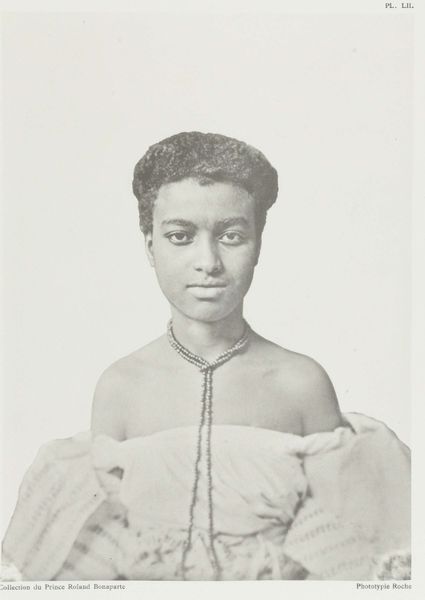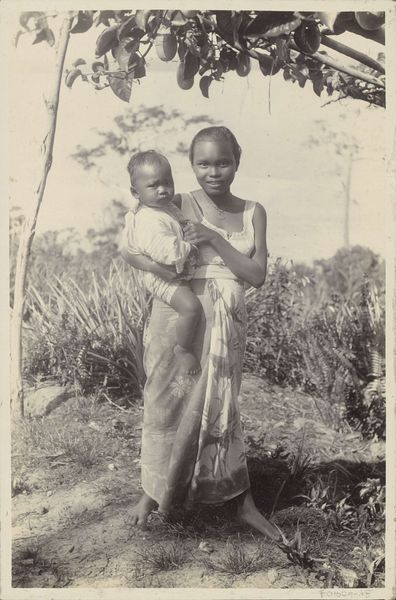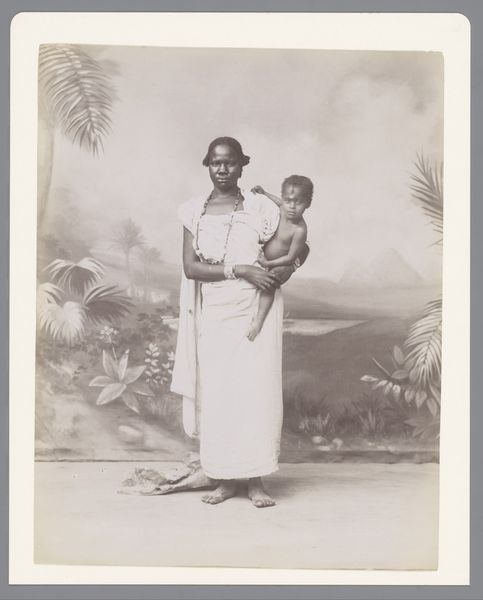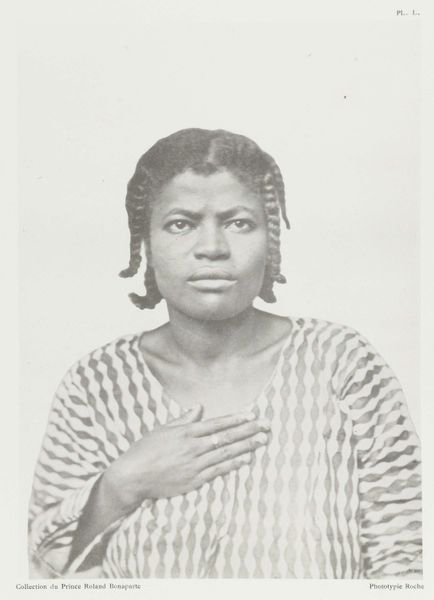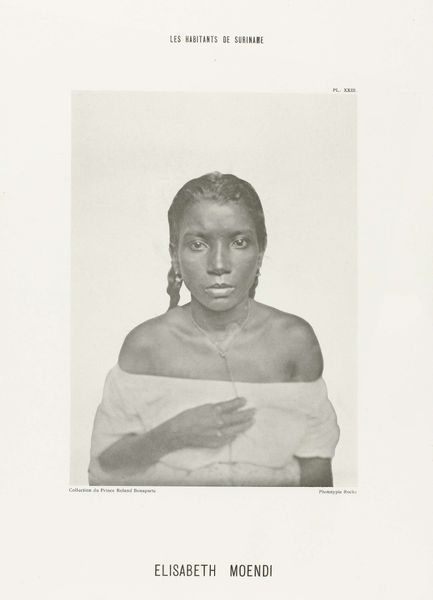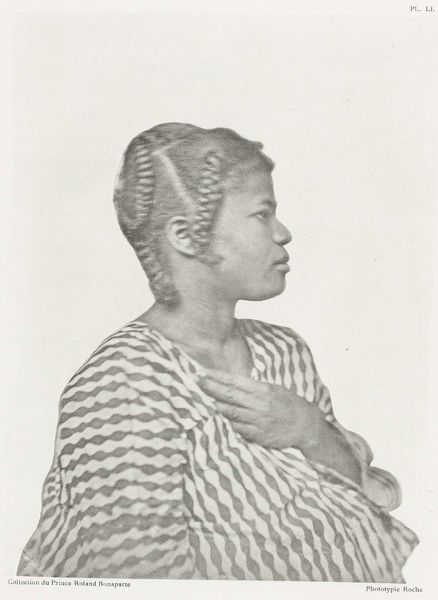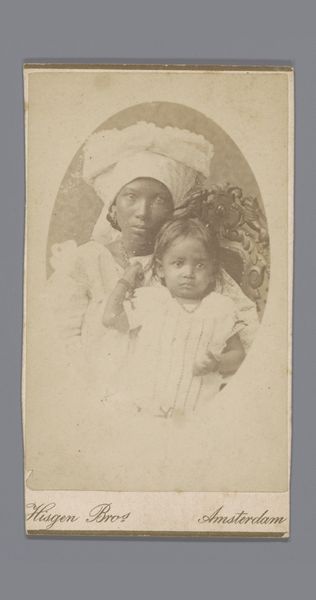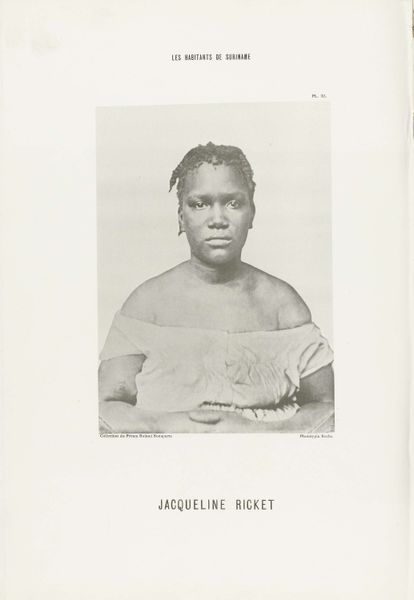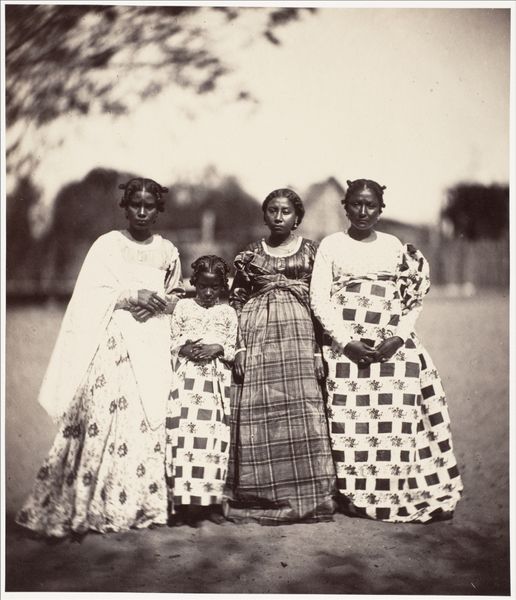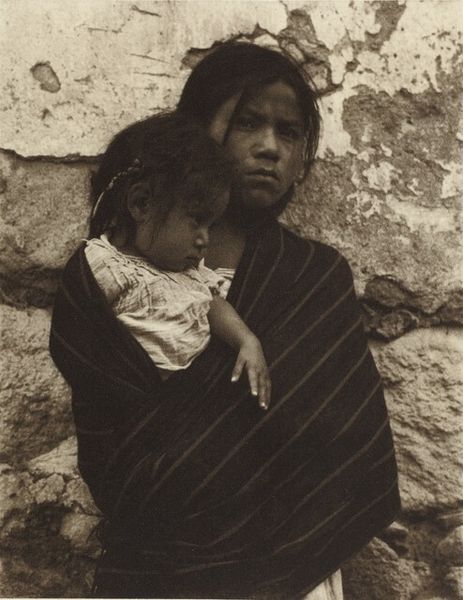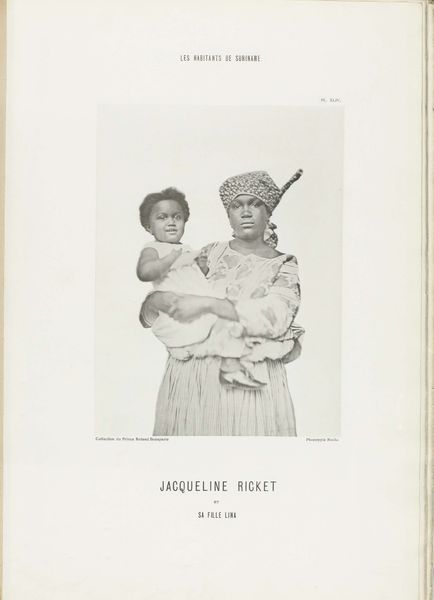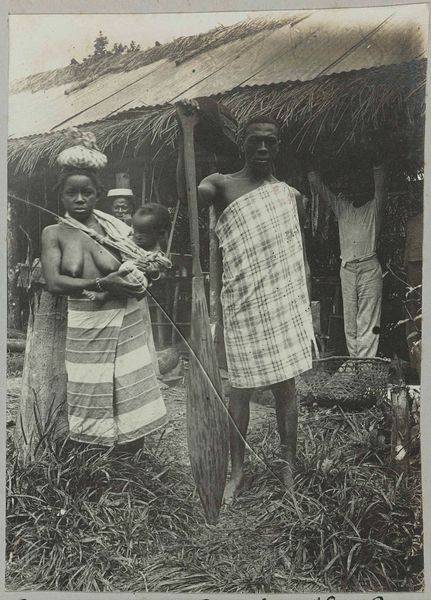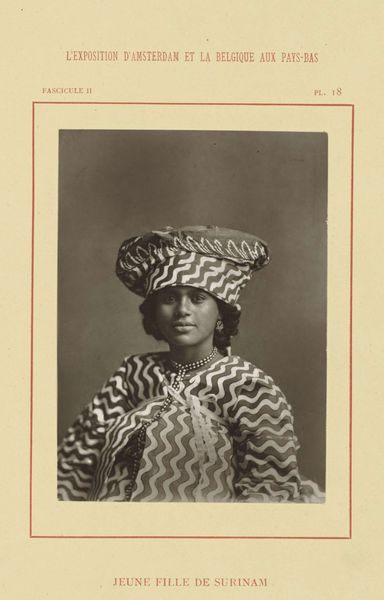
Portret van Jacqueline Ricket en haar dochter Lina 1883 - 1884
0:00
0:00
photography, gelatin-silver-print
#
portrait
#
african-art
#
photography
#
gelatin-silver-print
#
genre-painting
#
realism
Dimensions: height 235 mm, width 174 mm
Copyright: Rijks Museum: Open Domain
Curator: This is a captivating gelatin silver print, titled "Portret van Jacqueline Ricket en haar dochter Lina," taken sometime between 1883 and 1884 by Friedrich Carel Hisgen. It resides here at the Rijksmuseum. What strikes you most about this image? Editor: The immediate sense is one of composed dignity. The starkness of the photograph highlights the texture of their garments—the patterned headwrap, the mother's dress. It evokes a powerful stillness and resilience. Curator: Considering the era, photography like this, particularly portraits of people from colonized regions, often served specific colonial agendas. Anthropologists commissioned these images, sometimes using them to categorize and "scientifically" study different racial groups. The subjects’ agency in these depictions is often limited, influenced by power dynamics of the time. Editor: The visual language is loaded. Headwraps, for example, have always signified cultural identity and resistance against assimilation for women of African descent, but in colonial contexts, such symbols could also be exploited or misunderstood. Is this image a document of identity or of objectification? Perhaps it’s a mixture of both. Curator: It’s a poignant question. Although the artist and the purpose are subjects of inquiry, focusing solely on colonial agendas risks overshadowing the humanity and experiences of Jacqueline and Lina themselves. This image exists as both an intimate depiction of motherhood and a product shaped by colonial discourse. The very act of representing these women preserves them within historical memory, despite the forces arrayed against their full recognition. Editor: Absolutely. Seeing them positioned centrally, rather than marginalized, provides a striking image of the human spirit surviving through oppressive constraints. Despite any intent that might have been imposed by the commissioner of the work, as you explained, there’s a profound symbolic message that transcends the possible intention. This could well be seen as an inadvertent testimony of endurance. Curator: Ultimately, contemplating this photograph demands nuanced perspective. It functions on numerous historical and emotional layers and allows us a connection—however incomplete—to individual lives during a complex period. Editor: A powerful reminder of the stories photography can capture and how those stories continue to speak, even across generations.
Comments
No comments
Be the first to comment and join the conversation on the ultimate creative platform.
